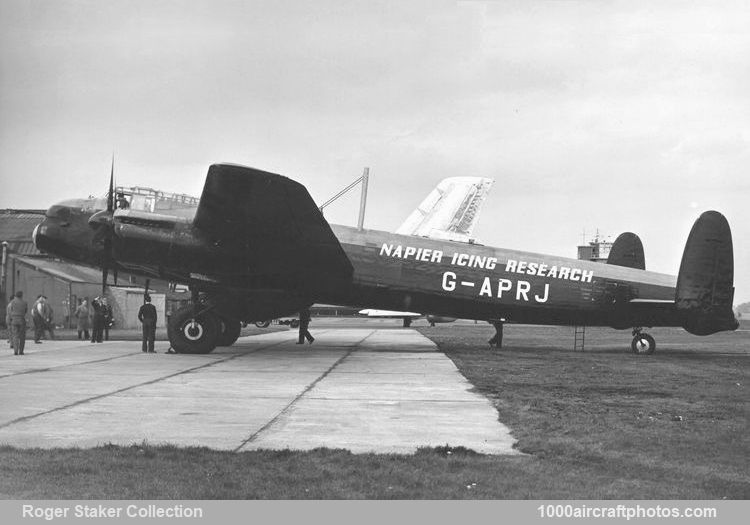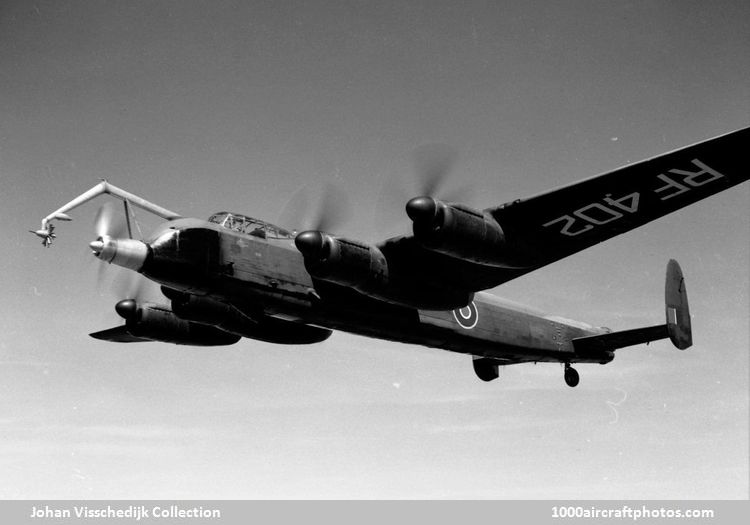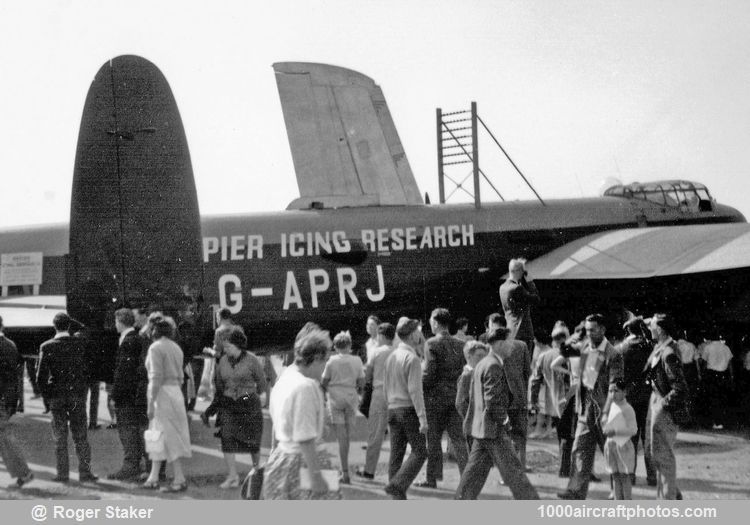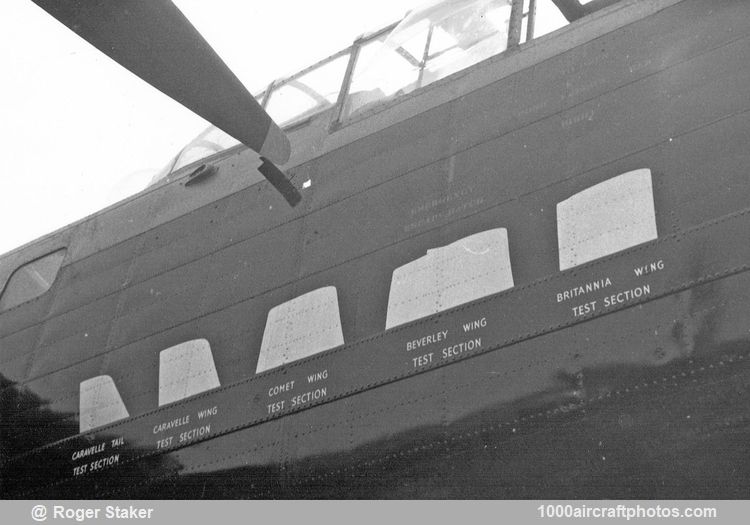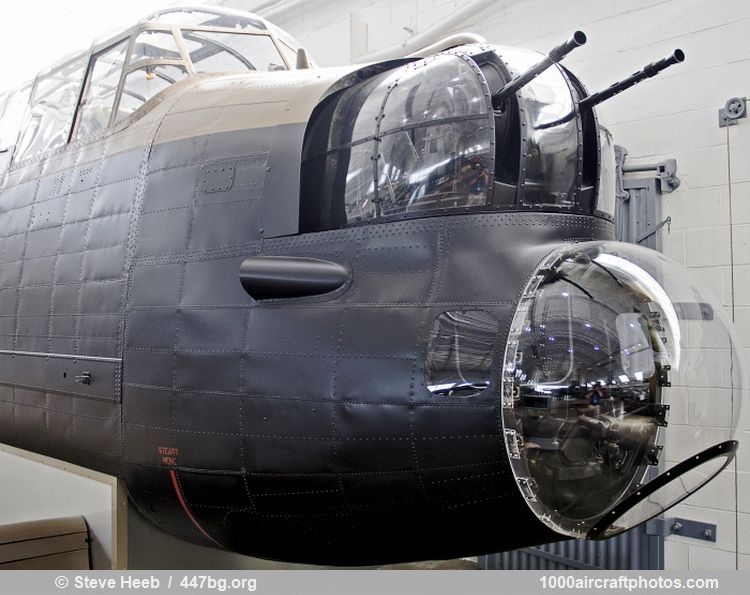12/31/2024. Remarks by
Johan Visschedijk: "Designed by Avro, 586 Model 694 Lincoln Heavy Bombers (including three prototypes) were built by five companies in six factories, spread over three countries on three continents. In the event, thirteen aircraft became test beds for powerplants, propellers, equipment, as well as for icing research.
(RF402) (
Johan Visschedijk Collection)
The first of two Lincolns used for icing research was RF402 on loan from the RAF. Converted by D. Napier and Son Ltd. at Luton in 1948, it was used for icing research on the 1,500 shp Napier Naiad turboprop engine, which was fitted in the nose. In September 1956 the Naiad engine and the spraying rig on the nose were removed and RF402 was allotted to the new Napier Icing Research Unit for continuing icing research on other objects. Subsequently it was flown with a vertically mounted Blackburn Beverley wingtip on top of fuselage, with a 36-nozzle spray rig in front of the research subject, fed by water from two 73 gal (273 l) tanks in the fuselage. On January 22, 1959, the aircraft was registered as G-APRP, however, June 3, 1959, the aircraft was permanently withdrawn from use. It was used for spares for the other icing research Lincoln, RF342.
From July 1955 to December 29, 1958, the Lincoln RF342 was also loaned by Napier from the RAF. Converted by Napier it had been fitted with the nose section of an
Avro Lancaster (TW911) and was equipped with four 240 gal (909 l) water tanks in the bomb bay. On December 29, 1958, the aircraft came on the civil register as G-APRJ, and the following month it was flown to France for more icing research.
In September 1959 it appeared on the SBAC Display at Farnborough, and was marked with symbols of items on which it had performed icing research until then: Blackburn Beverley, Sud Aviation Caravelle, Bristol Britannia, de Havilland Comet wingtips, as well as the Caravelle tail section. In 1960 it carried temporarily the '
Class B' marking G-29-1 (the 29 indicated Napier), while icing testing the tail unit of the Blackburn Buccaneer. The aircraft was sold to College of Aeronautics at Cranfield on October 22, 1962, and was marked in the 'Class B' as G-36-3 (the 36 indicated College of Aeronautics).
Registered again as G-APRJ on April 28, 1967, the aircraft was sold to the British Historic Aircraft Museum at Southend, on May 9, 1967, the aircraft made its final flight from Cranfield to Southend, the registration was cancelled May 30, 1984. From then on, incomplete and in various stages of dismantlement it was stored at numerous locations until the remains were bought by Mark Pilkington of Melbourne, Australia. The remains were shipped to Australia in 2007, and they are still stored at the Australian National Aviation Museum at Moorabbin for eventual restoration.
Lancaster nose section (TW911) (
Johan Visschedijk Collection)
One part of G-APRJ is on display. In 2008 the restored Lancaster (TW911) nose section became part of the Flying Heritage Collection of Paul Allen at Paine Field, Everett, Washington, USA. On March 24, 2017, the Flying Heritage Collection was renamed Flying Heritage & Combat Armor Museum."
